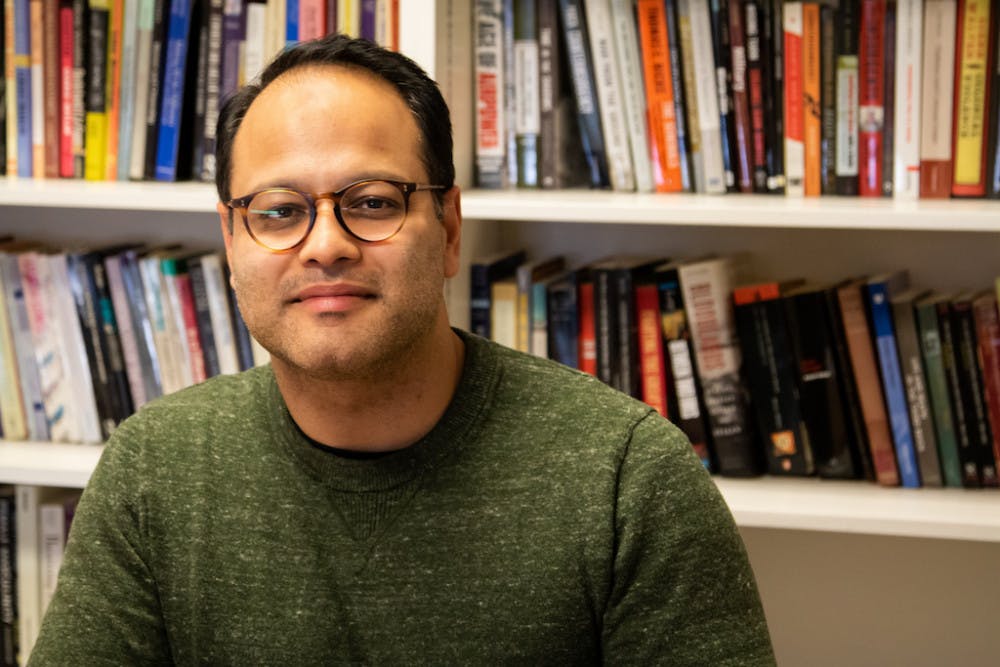Let’s do some word association.
The task is simple: I say “police” and you respond with the first three images that come to mind.
For most, this evokes an archetypal uniformed police officer. But depending on who we are and what experiences our community has had with law enforcement, the details of that picture may vary. Some think of strength and protection, while others’ minds jump to guns, to yelling voices and shaky videos of police violence on Twitter.
In this whirlwind of images, it is worth questioning why our idea of policing has become almost synonymous with the use of force. This and a plethora of other questions were addressed in “Policing the Globe: The Historical Origins of Contemporary Police Power,” a Winter Term class offered by the Department of History and taught by Visiting Professor Amit Prakash. Prakash, a self-described Europeanist, specializes in the history of the police in the French colonial world. The college’s Winter Term format provided a unique opportunity to teach a course he had had in mind for a long time.
The course centers around the finding that the civilian police is becoming increasingly intertwined with the military. In practice this means that we see more and more force being used in the everyday operations of law enforcement. Since 1997, the Pentagon’s 1033 Program has distributed used military equipment to civilian police forces, giving officers access to gear that they often have not even requested. According to the Law Enforcement Support Office (LESO), 8,000 law enforcement agencies in the United States currently use equipment obtained through the program. Examples can be found as close as Keene, N.H., where a Mine-Resistant Ambush Protected vehicle (MRAP), roams the streets of the quiet town.
Untangling the implications of this could fill up four weeks by itself, yet Prakash took his class a step further by approaching police militarization from a postcolonial angle.
Policing is indistinguishable from governance, which in turn is informed by historical events. Counterinsurgency techniques as we know them today are rooted in the world of European imperialism when policing was used to maintain constant social control in the colonies, and the police acted as an iron fist to stifle challenges to the regime.
“I think one of the contributions of postcolonial studies is to show that the shadows of empire are long. Colonial techniques survive colonialism and escape these temporal borders; just because they use the word ‘post’ doesn’t mean colonialism is over,” Prakash said. “As we know, culture tends to be sticky.”
Today, globalization further complicates the spread of these practices. Like physical equipment, military techniques used in Afghanistan can now easily be brought “back home” and become part of the repertoire of civilian police forces around the country.
Although this may feel distant, Prakash linked the issue to our personal lives. “The police are often our most direct contact with the physical manifestation of state power,” he said. “(They) become the real interface between the governors and the governed.”
Consistent with the systemic inequality that colonialism left behind, how these encounters with the police play out can differ vastly between different ethnic groups.
In class, Prakash emphasized the spontaneous nature of these interactions: “The police get to — in the moment — decide which laws to enforce and which (to) not … on certain populations. (They) aren’t necessarily going to be raiding Middlebury College because of underage drinking or marijuana, but they might well be raiding a street corner in the Bronx for the exact same practice by same age people. But they’re of a different color and social condition.”
As an alternative to a traditional research paper, Prakash gave his students the option to explore a topic of their liking in the form of a podcast, a website or a documentary film.
Students took advantage of this creative freedom. The projects, which were discussed in class, approached the content from a variety of angles and included interviews with the Addison County Sheriff and a minority police officer in Los Angeles. Some went as far as writing their own music for their podcast.
Grace Vedock ’20 was initially drawn to the course because of its connection to contemporary issues like police brutality and decided to explore the issue of masculinity in policing as her final project. If her podcast episode is any indication, then gender cannot be exempted from discussion of police militarization. Through interviews with Laurie Essig of the Department of Gender, Sexuality and Feminist Studies and sociologist Michael Kimmel, she came to see social ideas of gender as tools to provoke soldiers to fight.
The enforcement of masculinity creates bonding in the military, she found: “You don’t fight for love of country, you fight for love of brother.”
Vedock spoke with enthusiasm about the final products which were presented in class and described the course as an eye-opening learning experience.
“I think we all chose topics that interested us but were also complex, so distilling them was challenging,” she said, adding that her podcast overran the prescribed time limit by five minutes. “It’s definitely one of those classes where people left being like, ‘Wow, I had no idea that this was so widespread.’”
From its premises to its outcomes, “Policing the Globe” makes clear that it is only by understanding our history that we can begin to comprehend the events of today.
Or, in the words of William Faulkner: “The past is never dead. It’s not even past.”
J-Term Class Untangles History of Police Power

Comments



